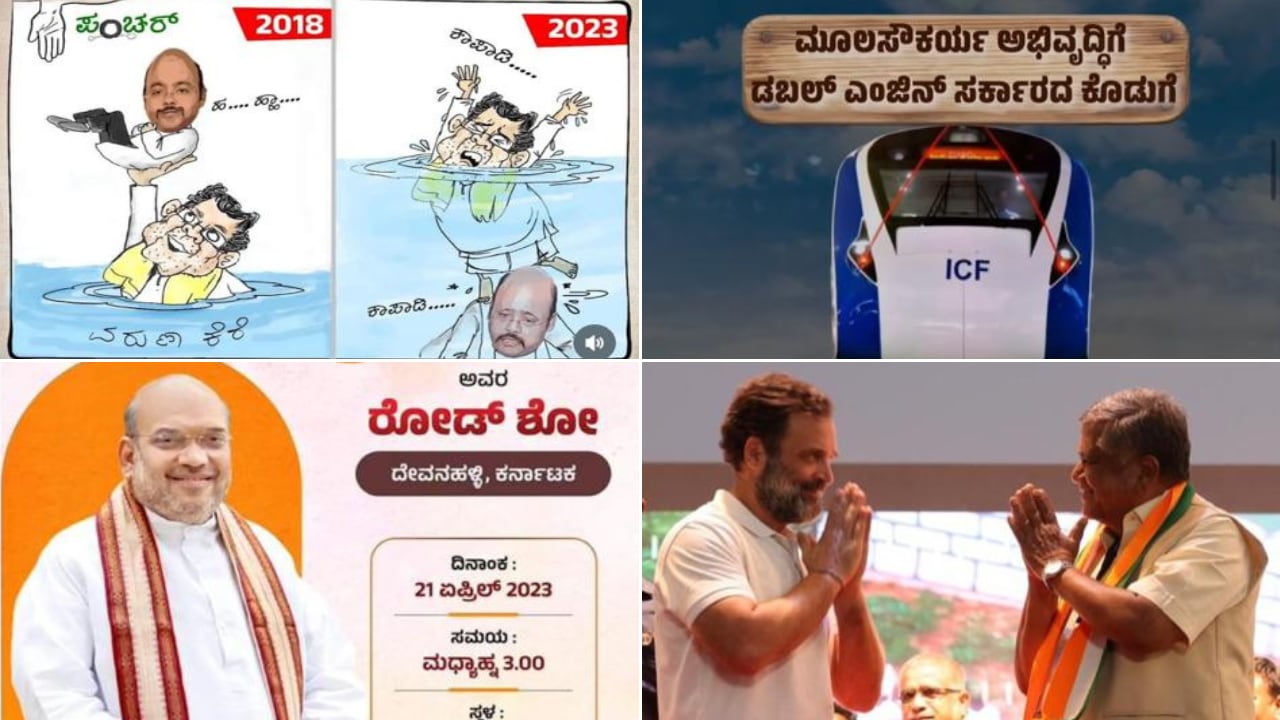With the upcoming elections mere weeks away, political parties are intensifying their digital campaigns, focusing on leveraging social media as a medium for communication especially for the young and first time voters. They are loosening their purse strings generously on platforms like Meta and Google for maximum reach and engagement.
In the last 30 days, as per the Meta Ad Library data the top spender in ads on social issues, elections, and politics was CMO Chattisgarh with a substantial spend of Rs 31,52,178, followed closely by BJP Rajasthan at Rs 28,94,011. A page called ‘MP K Mann Mein Modi’ and BJP Chattisgarh also featured prominently, spending Rs 8,54,242 and Rs 23,25,438, respectively. In contrast, Indian National Congress MP found itself in the 15th position with a spend of Rs 8,51,638.
Old and new methods
It has been almost a decade since India witnessed its first ‘social media’ election in 2014.
“It’s now a proven fact that political messaging over the digital world has the potential to reach more than half the population directly and act like a force-multiplier in political messaging. Interestingly, this trend is mirrored in the states of Madhya Pradesh, Chhattisgarh, and Rajasthan,” said Anup Sharma, independent political communications consultant who is advising one current and one former chief minister in two of the key states.
Unlike previous elections the role of popular social media influencers has been expanded.
“Alongside key party officials and IT cell heads, political parties have enlisted these influencers in their war rooms to assist with strategy, candidate training, and message improvement. Local influencers, office bearers, and booth workers are also engaged as social media influencers, creating memes, videos, and messages that emphasise key narratives,” said Sharma.
Barin Mukherjee, co-founder and CEO at I assisted content solution company, Digital Refresh Networks said the parties are just working like any brand would. The digital strategy is similar because the end goal is always maximum reach.
“The medium is being used to reach out to young voters who are not actively seeking political content and engage them,” he said.
Sharma highlights some of the new trends. Artificial Intelligence (AI) based tools are being employed at 3 levels – for analysing the key topic and issues at the local level, tracking any opposition propaganda and fake news and then in generating the digital narrative, preparing digital content, messages and creatives, responding in real time.
“The video curation and sharing platforms are being used extensively for creating political agenda with videos / memes made with local influencers. Fan pages and meme pages are also being used extensively,” he said.
The election commission has also set up specialised cells to monitor the spends on social media by party candidates and the party pages. Besides this they are also closely observing fake news and misinformation being spread through WhatsApp and messenger apps.
More on spends
Examining state-wise expenditures in the last 30 days, Madhya Pradesh emerged as the highest spender at Rs 1,82,87,505, followed by Chhattisgarh, Rajasthan, and Telangana The digital landscape in Madhya Pradesh saw significant investments from various pages, including CorruptionNath, MP ke Mann Mein Modi, BJP Madhya Pradesh, Indian National Congress – Madhya Pradesh, and Chetanya Kasyap.
Rajasthan, with a total spend of Rs 13,39,454, showcased substantial investments from BJP Rajasthan, DIPR (Department of Information & Public Relations), Nahi Sahega Rajasthan, Rajasthan Mein Congress Phir Se, and Ashu Singh Surpura.
Moving on to spending on Google ads. As per their transparency report for the period between October 3 and November 1, the total spent on political advertising amounted to Rs 69,15,500. The Bharatiya Janata Party led the chart with an expenditure of Rs 33,60,000. Other notable contributors included the Directorate of Public Relations, Madhya Pradesh at Rs 5,04,000, Department of Information and Public Relations (DIPR) at Rs 2,30,000, Indian Pac Consulting Private Limited at Rs 2,19,000 and Indian National Congress at Rs 1,39,000.
As political narratives take center stage in the digital arena, these figures underscore the significant investments made by political parties, shaping the discourse in the lead-up to the elections.
Change in messaging
Political campaigns on social media have become increasingly narrative oriented and not just limited to awareness or information said experts.
“An interesting trend is the strategic push of content from traditional media to social media like short news clips or print coverage is gaining more attention than ever before. Corporatisation of political campaigns has brought engagement of experts. A trend that is popular amongst FMCG brands.” said Sashi Kumar, founder partner at Tarmac Affairs, a Delhi based media outreach and advocacy company currently engaged in Madhya Pradesh.
